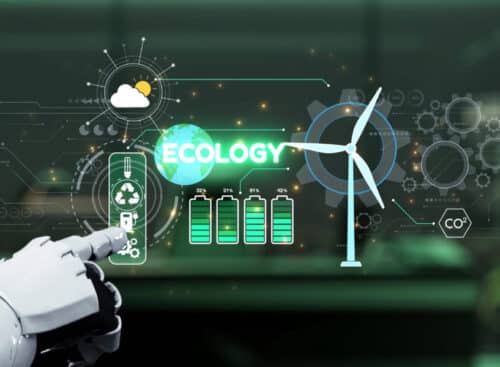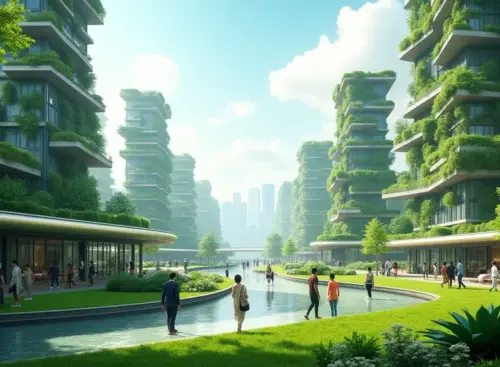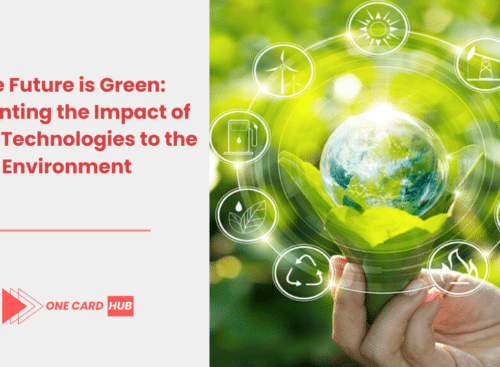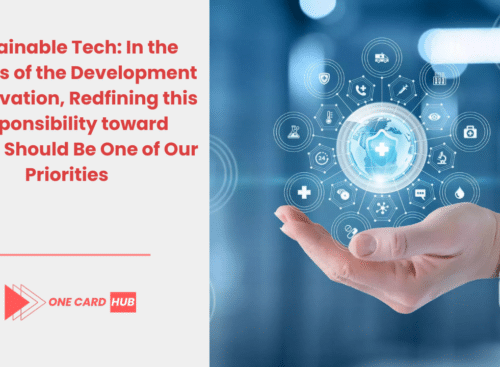While struggling with worldwide ecological issues, ecofriendly innovations, also referred to as clean technology (green tech), orgyve green tech as major force which helps in turning the industries. Such changes strive to get rid waste, increase energy efficiency, and lower carbon footprint of companies that operate within many different spheres of activity. Renewable resources are a valuable source of green energy, which shifts from energy generation towards sustainable materials. This way, green technology is not just an ethical but also a strategical decision for future business stability. We might be significant in exploring how eco-friendly ideas are transfiguring the sectors and steering them towards the green future.
Renewable Energy Integration
The energy sector has been experiencing fast-paced transition, by shifting focus from the use of traditional fuels to the renewable sources so as to include solar, wind, and hydroelectric power. But this transition doesn't agree with it but it also changes the form of energy production which includes production distribution and consumption patterns. Industries are rapidly switching to renewable power to run their business, which is stimulated by the new technologies, cost decline and the subsidies and the incentives from the government. The integration of renewables has a significant role to play in the quest to create sustainable businesses and help combat climate change. The inclusion of symbols, imagery, and figurative language provides depth and emotion to the story. These elements serve to amplify the themes and convey the message effectively.
Sustainable Agriculture Practices
In the Agri-technology, progressive green technology is significantly increasing the positive effect. Modifications like precision farming which incorporates such technologies as GPS and IoT can be utilized to increase the farmers’ efficiency and to lower the use of resources such as water, fertilizers, and pesticides. Such technicals promote desired results in terms of yield and the environment, making it be wide-compliant with the policies of environmental sustainability. Moreover, evolution in biotechnology is on the move and it is evidenced by the development of crops that are able to withstand drought and alternative protein resources that are helping to address global hunger while at the same time, minimizing the ecological footprint of agriculture.
Green Building and Construction
The building an construction industry is starting to make its move forward towards green technology and now trying to develop energy-efficient structures and environment-friendlier buildings. The construction of green buildings involves the application of sustainable materials and innovative designs for better energy efficiency and waste reduction. Furthermore, it incorporates energy-saving lamps and machines as well as efficient use of natural resources. Such practices on the one hand decrease a carbon footprint of buildings while on the other hand offer well-being and financial benefits to their occupants. One major factor for the sustainable development proliferation within the construction sector is green building standards as well as certifications, for instance, LEED (Leadership in Energy and Environmental Design).
Sustainable Transportation Solutions
Transport was the main creating factor for global emissions, thus, the search for sustainable solutions ongoing. EVs that are run by the clean energy into which new technology of batteries is introduced and so charging infrastructure also improves. Besides cars, what’s interest today is fuel alternatives such as hydrogen and biofuel, and the industry is spending so much to build facilities for public transportation like roads for cycling and walking. Such important achievements required to cut down emissions, and to complete the transition to the carbon-free economy.
Although, traditional waste treatment approaches degraded the environment, now more sustainable practices and technologies such as landfill management and recycling have emerged as solutions.
Development of waste management and recycling techs is already helping for material reproduction and refining. Advancement will be brought about by the automation of sorting systems, state-of-the-art recycling of plastics and electronics, and the coversion (of) waste to energy. This technique is the foundation of minimizing the amount of waste going to landfills, make a step towards sustainable use of resources and making a cycle where materials are being recycled instead of being buried and creating less environmental impacts.
Water Conservation and Management
Increasing water deficit is an emerging issue, which pushes technologies to use water resources in a more efficient way, crystallize, and manage. Innovations in this spirit of rationality involve smart irrigation systems, water-efficient devices and appliances, and the technologies for water treatment and reuse. We modernize the existing water management framework by allowing consumers to become more conscious, making them part of this endeavor, and bequeathing the crucial resource to the future generations. Sustainable technologies which are going to be applied by industries in their production cycles are the driving force of a new world which will be green and healthy. Sustainability can be realized by companies through the application of green technology into their day-to-day activities which will eventually dribble down in lowering environmental footprint, improvement in performance and creation of competitive edge. Along with the rest of the world community that is fighting the environmental challenges, the role of ecotech will just turn out to be crucial in encouraging the sustainable development. A change towards a green economy implies a joint wok of governments, enterprises, and the public based on environmental friendly innovations leading the way.
Circular Economy and Resource Efficiency at its core is a model of using resources in an efficient way, focusing on recycling, repairing, and refurbishing existing products to minimize waste generation and environmental harm.
That of the circular economy that goes around prolonging the life cycle of materails through up-cycling, reuse-cycle and recovery is gaining momentum. In this regard, the circular economy model presents a novel being compared with the long-existing linear economy of "take, make, dispose" and offers a sustainable manner to fulfill the same objectives by reducing resource extraction and cutting-down waste generation. Companies are looking at innovative business frameworks and process that support circularity in the production process, such as product-as-a-specialty (PaaS) models that seek to provide the service, not the ownership, and designing new products to make it easy to recycle the product materials at the end of the product life. This divergence of material saving not only reduces waste generation on this planet, but also provides entrepreneurs with new business prospects and revenue streams.
Energy and Storage Systems and Grid Renewal
At the same time, the contribution of renewable energy to the power grid will rise and it will be more significant, therefore the role of storage technologies and grid modernization will be more substantial. Lithium-ion batteries, flow batteries, and compressed air energy storage are the advanced energy storage solutions that are needed to equip the grid with the means to respond to supply - demand balancing and to enable renewable energy technologies to match the reliability of traditional sources of electricity. Additionally, the modernization of the grid via the smart grid technologies makes the distribution of power possible in a more efficient manner and resultantly permits more integration of renewables, and increases the resilience against breakdowns. These advances play significant role while moving to an eco-friendly energy solution.
Green Raw Materials and Eco-Friendly Chemistry
The formation of environment-friendly materials and the use of green chemistry philosophies are stirring up the manufacturing and makeover of the products. By means of materials that are recycled from renewable resources, manufacturing processes which involve the use a minimum amount of harmful substances and product designing that is made for the easier recycling of materials companies can significantly cut down their environmental impact. One can add to this list bioplastics, recycled materials, and designs which have been inspired by biomimicry. Green tech is famous for its contributions to environmental sustainability within materials science.
Digitalization and Sustainability
The prospects of digital solutions like blockchain, AI and IoT as powerful instruments for reinforcing sustainability among the industry is higher. Blockchain has substantial potential to introduce to existence in supply chains the element of transparency. This becomes a key factor in ethical sourcing, and thus, leads to less environmental impacts. AI and IoT can prioritize resource use and save energy by being purposeful and energy efficient and good environmental monitoring. Besides, the digitalization of the green action makes the procedure more successful and delivers the data for the experienced decision-making and legislation.
Renewable Energy Beyond Electricity
The applications of renewable energy isn’t bounded to only electricity generation now but extends to heating, cooling and transportation. Development of new solar thermal abilities, renewable geothermal options as well as hydrogen renewable technologies is increasing the level of clean energy used in these industries. Through diversifying the green energy supply, industries would be even more independent from fossil fuels and the concentration of the greenhouse gases will be accordingly lowered.
Investment in Green Tech
Such as getting aware of environmental problems the green technology also grows. Federal, private sector and corporations are making increasing investments to sustainable innovations which are accorded with their values in societal goodness and economic gains. This financial support is of paramount importance in undertaking the research and development, expanding successful technologies to enterprises, and the speeding up of green practices across different industries. The forthcoming eco-friendly innovations possess in an immeasurable way the power to restructure those fields which were previously fossil based. These technologies will take time to flourish and mature, and how will they affect industries will be a primary consideration in targeting environmental problems, making our economy more resilient, and reassuring public safety. Achieving the sustainability goals of our society while today requires everyone's participation and a combination of renewable inventions with investments and implementations of green technologies. The world of today belongs to the fortunate few who will enjoy these improvements for a greener and more sustainable planet to pass on to upcoming generations.
FAQ: Eco-friendly Innovations and Green Technology are two of the most environmentally friendly types of innovations that also involve the use of more sustainable production methods.
1: What do we mean by "green technology" and how one can play a decisive role?
Green tech, or ecologicalially-oriented inventions, covers a set of procedures and methods which help create a more eco-friendly world by reducing pollution and, on the contrary, taking advantage of renewable energy sources. Besides, it is simply must for fighting the climate change, keeping the biodiversity health, and bequeathing a safe and secure environment for the descending generations.2: Sustainability is a goal for nearly every country and something the world has to tackle. One of the important ways renewable energy plays role in sustainability is:
The renewable energy which is the products of the nature`s processes such as sun, wind and stream making this option is a sustainable replacement for fossil fuels. It replaces a large proportion of greenhouse gas emissions, the air pollution we ecosystems breathe is alleviated, and exhaustion of finite resources is curtailed thereby acting as a major player in fighting climate change and promoting the environmental sustainability of mankind.
3: A good query is: What are some real life examples of sustainable agriculture practices?
Innovative and sustainable agricultural practices such as site-specific farming techniques, organic farming, mixed cropping, pest management using chemicals and natural biological ones is the need of the day. These practices mainly aim to raise the productivity of food but at the same time, to cause as little environmental harm as possible, improve soil health as well as save water.
4: On the one hand, the environmental effect of green buildings have endeavored to make a difference.
As a matter of fact, the green buildings are constructed with the use of sustainable materials, the energy efficient systems and as well as the modern designs to minimize the energy and water consumption as well as the greenhouse gas emissions. Their environmental advantages are wide-ranging, including but not limited to resource conservation, serving as cost-effective tools for energy savings, which in turn contribute to cleaner environment and healthier dwellings.
5: Where are these innovations discovered for sustainable transport?
Different efforts in the creation of environment-friendly vehicles involve electric vehicles, hybrid cars, hydrogen fuel cell vehicles, better public transport and facilities of biking and walking. Such inventions intend to minimize the degree of pollution, improve the clarity of air and stop the over-reliance on fossil fuels.
6: What is a role that recycling and waste management play in the area of green tech?
The utilization of innovative approaches to treat waste and the separation of recyclable materials into usable ones ensures less attention is needed in dumping sites while also conserving natural resources. For instance, state-of-the-art technologies that transform waste to energy and furnish advanced recycling techniques for plastics and electronics allow the implementation of a circular economy model.
7: The available room for green technology cannot be effective solely in a single channel also, but it should be under the water conservation and protection also.
Water conservation technologies such as the use of smart irrigation, low-flow fixtures, and water recycling systems comprise the most beneficial steps for water resources utilization and conservation. These cisterns aid in maintaining supplies of fresh water, decrease the amount of energy used in delivering clean water, and they present viable, sustainable water management methods.
8: What digitalization trends are enabling employees and organizations to think more sustainably?
Digitalization by way of the application of AI, IoT, and blockchain provide a cross-functional approach towards accomplishing sustainability goals which include efficient use of resources, energy efficiency, and supply chain transparency. These technologies facilitate improved environmental monitoring, their application in more data-driven decision-making and adoption of the eco-friendly business management approach.
9: Do AI investments keep accelerating?
In fact, a significant portion of investments is now funneled into green technologies mainly due to the increase of environmental consciousness, regulatory promotions and recognition of economic potential among other benefits to be derived. Public sector, private investors, as well as companies focus on funding green technology (in particular green business initiatives), thus innovation is leading the way to creating sustainable economy.
10: What can individuals do so that green technologies take off?
The public also could be playing a role by implementing personal changes, like utilizing the energy efficient appliances, supporting of renewable energy, recycling, watersaving and upgrading to suitsuare transportation. The advocacy and support of policies, which stimulate green tech acceptance, as well serve also as the arm of the whole systemic changes, are considered important in attaining sustainability.







Related posts